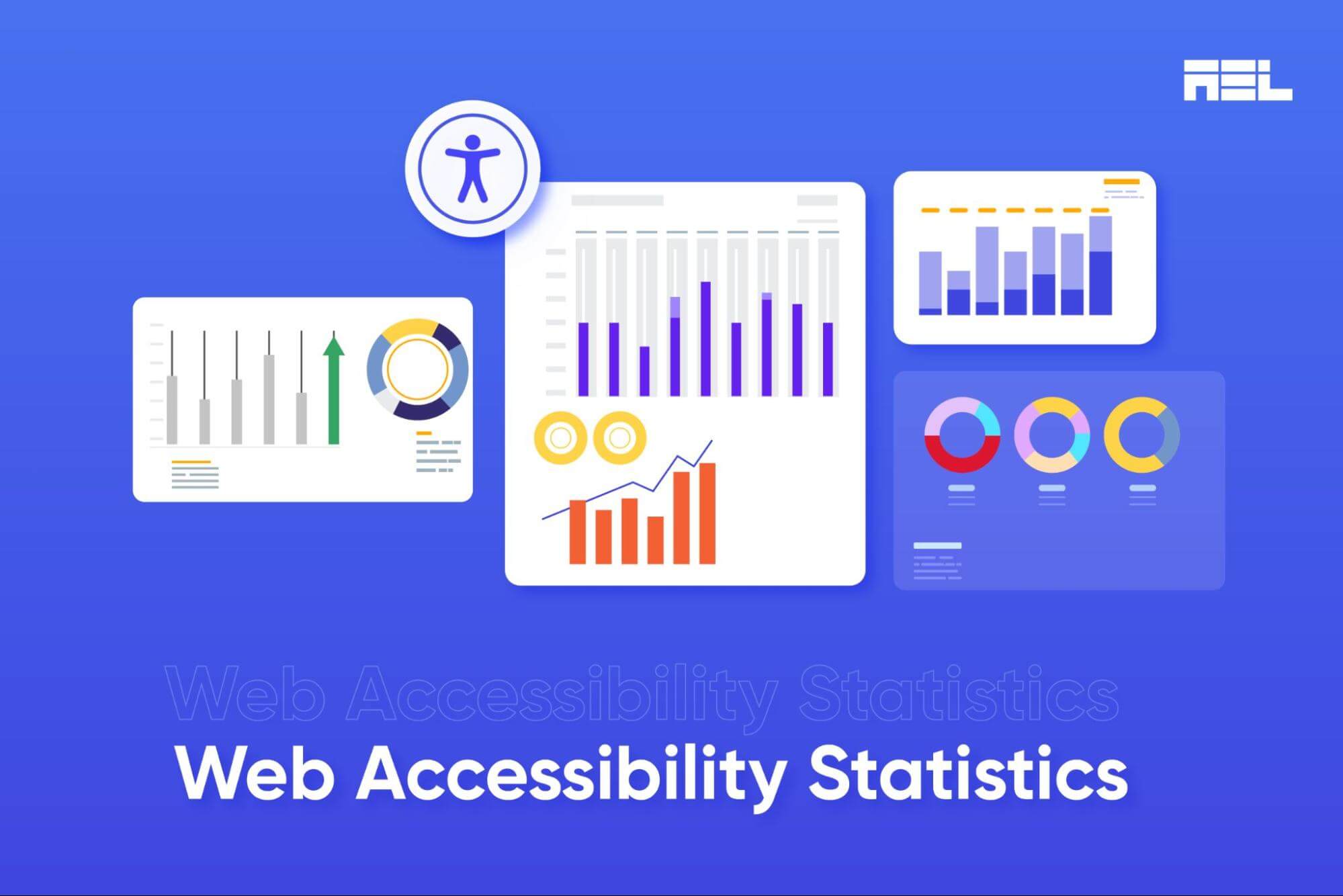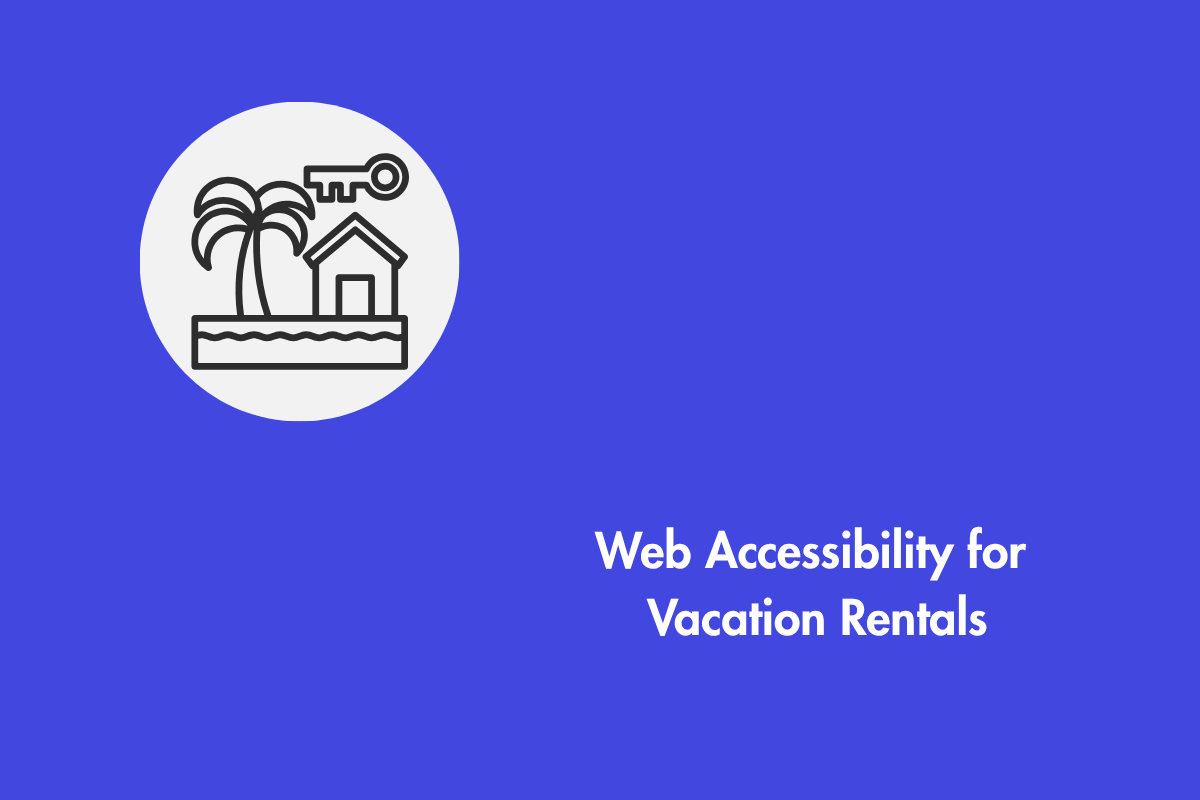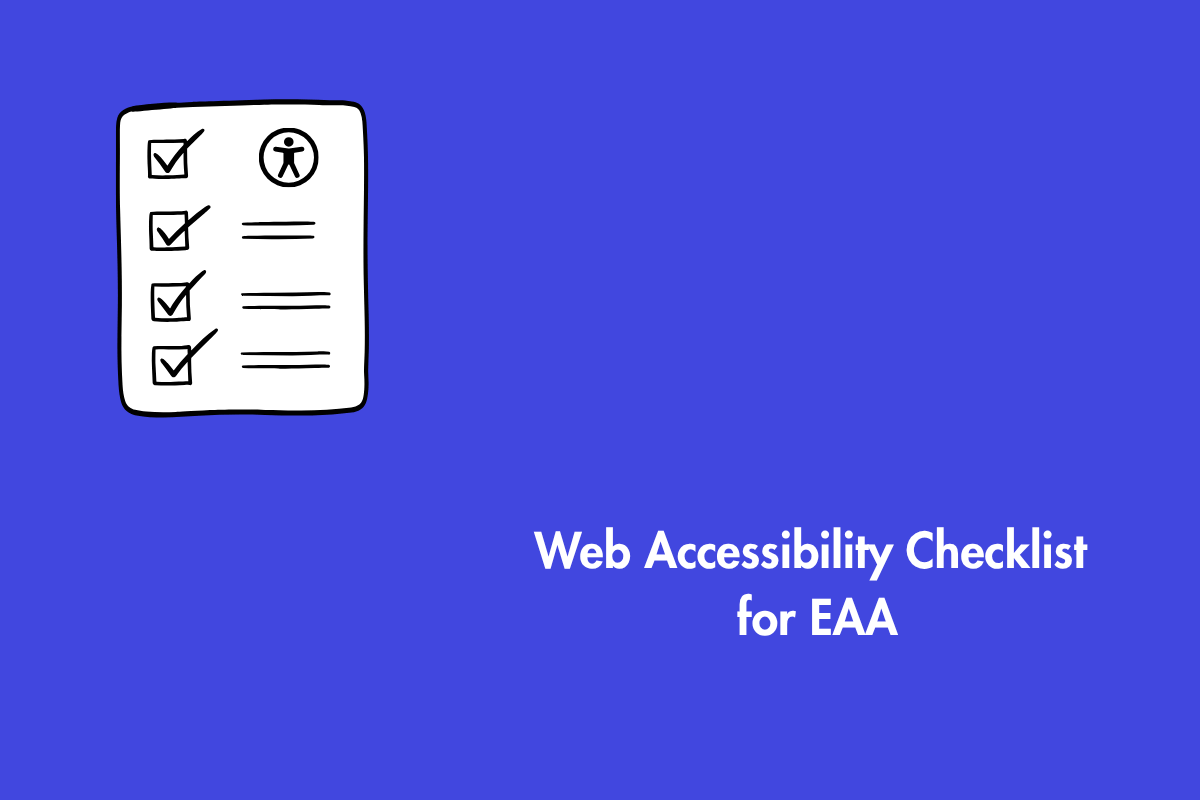In our digital world, web accessibility is vital for people with disabilities. It’s not just morally right; it reduces legal risks, enhances branding, improves the user experience, and boosts employee productivity.
However, many organizations still lag in meeting Web Content Accessibility Guidelines (WCAG) standards. We’ve compiled stats highlighting accessibility’s benefits, key drivers, and common errors.
Interested in the state of web accessibility in 2023, ADA stats, and global impacts? Let’s explore further.
Table of Contents
Digital Accessibility Today
In today’s interconnected world, digital networks know no bounds. Yet, access to digital technology varies widely across diverse global communities, influenced by factors such as infrastructure and available resources. These disparities in technology access have become a pivotal issue in the quest for global digital accessibility.
Significant strides have been made in recent years with efforts to improve the accessibility of websites and digital content. However, despite growing awareness and recognition of accessibility’s importance, challenges remain to overcome.
In the US, 84 million disabled internet users face hurdles, with only 26% having high-speed internet and about 12% of Americans over 40 experiencing significant vision impairment affecting online content access. Globally, over 2.2 billion individuals have visual impairments.
This makes up over 27% of the world’s population who can benefit from using screen readers to navigate the web. These challenges underscore the significance of digital accessibility, not just from a legal and standards perspective but in terms of its profound impact on people’s daily lives.
The internet is now essential, allowing us to perform tasks ranging from ordering food to managing finances. However, digital content accessibility issues create obstacles for disabled individuals, hindering their online engagement.
Over 430 million people worldwide experience disabling hearing loss, with an estimated 1 in 10 people expected to have hearing disabilities by 2050, impacting their capacity to access audio content. As awareness of inclusion grows, there’s a rising demand for accessible websites to reduce web accessibility barriers.
Legal regulations like the Americans with Disabilities Act (ADA) emphasize ADA compliance in web design. Moreover, web accessibility isn’t solely beneficial to people with disabilities; it enhances the overall user experience, benefiting a broader audience.
Designing a website with clear navigation, easy-to-read content, and auditory tools not only serves individuals with visual impairments but also improves the experience for users in noisy environments or using small mobile devices.
Web Accessibility Statistics: A Vital Standard
The World Health Organization (WHO) reports that 16% of the world’s population has disabilities, while internet usage stats show 5.3 billion users worldwide in 2022. However, accessibility to the Internet varies significantly.
In the US, 1 in 6 adults, or about 61 million, have disabilities, and surprisingly, 59.6% lack internet access. Moreover, 90% of websites aren’t usable for assistive technology users.
Globally, only a few countries, like Australia, Canada, France, India, Germany, Spain, Japan, and the UK, will have adopted WCAG 2.0 as their national web standard by 2023.
Even in the US, 48% of popular federal websites don’t meet basic accessibility standards. These numbers show that global web accessibility still has a long way to go.
Even with these real obstacles, there is still room for improvement. Global initiatives and exchanges can contribute to the increasing internationalization of digital accessibility as our world becomes more interconnected.
Widely acknowledged guidelines, like the Web Content Accessibility Guidelines (WCAG), can also aid in policy standardization and inspire other nations to enact legislation safeguarding accessibility rights. Furthermore, it will be simpler to establish online accessibility as the standard worldwide the closer we are to a single point of truth.
Benefits of Web Accessibility for Businesses
Organizations need to use a business case as a planning tool for various endeavors. Regardless of the type of organization—commercial, educational, non-profit, or governmental—the majority demand explanation before allocating funds or labor to a particular organizational goal.
The most marginalized group in the world is made up of over one billion people with disabilities. Businesses have enormous potential to take advantage of this sizable market and generate a sizable return on investment. However, there are advantages to accessibility solutions that go beyond financial gain.
To ensure that everyone has equal opportunity, accessibility is crucial. Companies that embrace accessibility might uncover fresh concepts, viewpoints, and solutions.
By making their digital products available and accessible to a larger audience, businesses enhance their chances of gaining a significant market share. This leads to improved workflows and a higher return on investment (ROI).
In a perfect world, companies would set diversity and web accessibility priorities from the outset when developing new websites and software. But the reality is not up to par.
Surprisingly, 98% of US websites do not adhere to WCAG standards, and lawsuits under the ADA about digital accessibility are on the rise. It’s time for a change.
Benefits of Web Accessibility
- Embracing Inclusion
- Mitigating Legal and Reputational Risks
- Boosting User Experience and Engagement
- Expanding Your Customer Base
- Promoting Innovation and Establishing Business Distinctiveness
Data from the World Health Organization (WHO) reveals that about 1.3 billion people worldwide, or roughly 16% of the global population, or 1 in 6 individuals, have significant disabilities.
It is noteworthy to mention that this statistic does not encompass individuals with temporary disabilities, those who navigate disabilities without a formal diagnosis, or those encountering situational disabilities.
Indeed, this is a considerable segment of the population. Just picture yourself in a corporate board meeting, asserting that cost-cutting measures will lead to one out of every six individuals encountering difficulties in using our product. The implications are striking.
Web Content Accessibility Guidelines
The Web Content Accessibility Guidelines (WCAG) are crucial for web accessibility. In the US, over 84 million disabled internet users exist, but only 26% have high-speed internet.
Approximately 12% of Americans over 40 face significant vision impairments, affecting their online content access.
WCAG 2.2, a comprehensive web standard, was published in October 2023, providing comprehensive guidance on enhancing the accessibility of web content for individuals with disabilities.
WCAG 2.2, a comprehensive web standard, was published in October 2023.
WCAG covers various disabilities, like vision, hearing, mobility, speech, cognition, language, learning, and neurological function.
Over 2.2 billion people globally have visual impairments, making more than 27% of the population use screen readers.
WCAG 2.2 compliance offers recommendations for web content accessibility. These guidelines are essential for users with vision impairments and disabilities such as deafness, mobility limitations, speech impediments, sensitivity to visual stimuli, and more, as highlighted by the World Health Organization (WHO) data.
These standards, often required by law, make WCAG 2.2 compliance vital for creating user-friendly web content for diverse audiences with disabilities.
Compliance with WCAG guidelines is crucial, as web accessibility laws like Section 508 for U.S. federal agencies and AODA for organizations in Ontario, as well as EN 301 508 for digital accessibility standards in the European Union, underscore the importance of adhering to these guidelines.
Moreover, new and upcoming laws may further incorporate WCAG, making it vital to consider all relevant regulations and laws that apply to your organization.
Emerging Trends
The Domino’s Pizza accessibility lawsuit in the US in 2018 triggered a wave of legal actions against private sector companies for their inaccessible websites, resulting in a nearly 50% increase in ADA-related accessibility lawsuits from 2017 to 2021.
The COVID-19 pandemic further accelerated the demand for digital services, prompting governments worldwide to adapt accessibility laws, such as the 2021 Canadian AODA and the US Department of Justice’s ADA guidance for web accessibility in 2022.
Today, these web accessibility lawsuits are on the decline as organizations proactively address accessibility issues. Government, education, and private-sector technology procurement contracts increasingly mandate accessible technology, emphasizing accessibility as a business advantage.
Diversity, Equity, and Inclusion (DEI) initiatives, both internal and external, exert pressure for more accessible technology. Accessible employment and productivity tools are expanding opportunities for individuals with physical and cognitive impairments in the workforce.
Businesses are recognizing the broader business case for accessibility, tapping into the underserved market of individuals with impairments, and boasting an estimated global discretionary spending of $6.9 trillion.
Accessibility also improves brand perception, fosters innovation, and aligns with SEO, usability, QA testing automation, and other core business principles. Over time, organizations are evolving their approach, embracing the multifaceted benefits of inclusion and digital accessibility, extending well beyond mere legal compliance.
Closing Thoughts
The journey to global digital accessibility is ongoing. Your efforts, big or small, contribute to a more inclusive digital landscape. Join the movement for web accessibility and be part of the change. Contact AEL Data to learn more and make a difference in building a more inclusive digital world for all.



